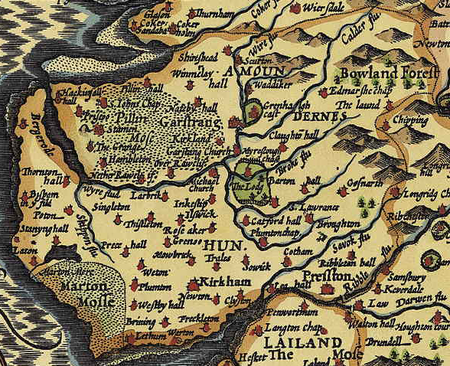Amounderness Hundred
English royal forestsEngvarB from September 2013History of BlackpoolHistory of the City of PrestonHundreds of Lancashire ... and 1 more
The Fylde

The Amounderness Hundred ( ə-MUN-dər-nəs) is one of the six subdivisions of the historic county of Lancashire in North West England, but the name is older than the system of hundreds first recorded in the 13th century and might best be described as the name of a Norse wapentake. In the Domesday Book of 1086, it was used for some territories north of the River Ribble included together with parts of Yorkshire. The area eventually became part of Lancashire, sitting geographically between the Rivers Lune and Ribble, in the strip of coast between the Irish Sea and Bowland Forest.
Excerpt from the Wikipedia article Amounderness Hundred (License: CC BY-SA 3.0, Authors, Images).Amounderness Hundred
Stanzaker Hall Drive, Borough of Wyre Myerscough and Bilsborrow
Geographical coordinates (GPS) Address Nearby Places Show on map
Geographical coordinates (GPS)
| Latitude | Longitude |
|---|---|
| N 53.86 ° | E -2.78 ° |
Address
Stanzaker Hall Drive
Stanzaker Hall Drive
PR3 0PB Borough of Wyre, Myerscough and Bilsborrow
England, United Kingdom
Open on Google Maps









